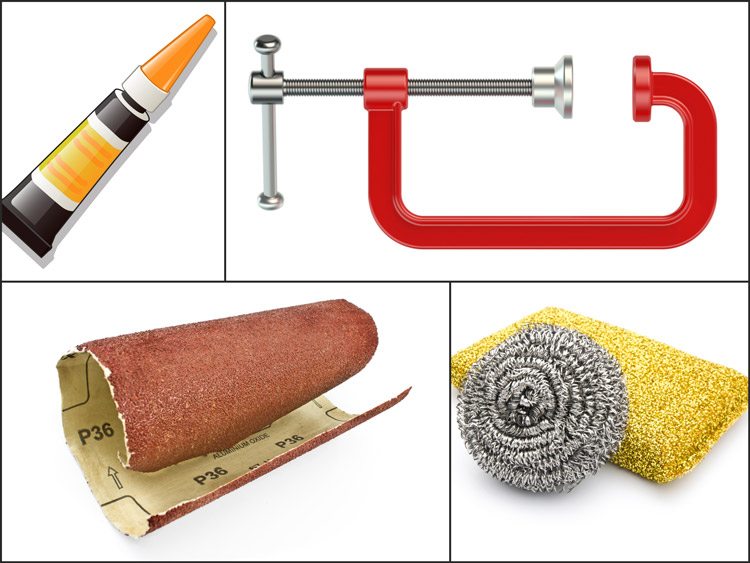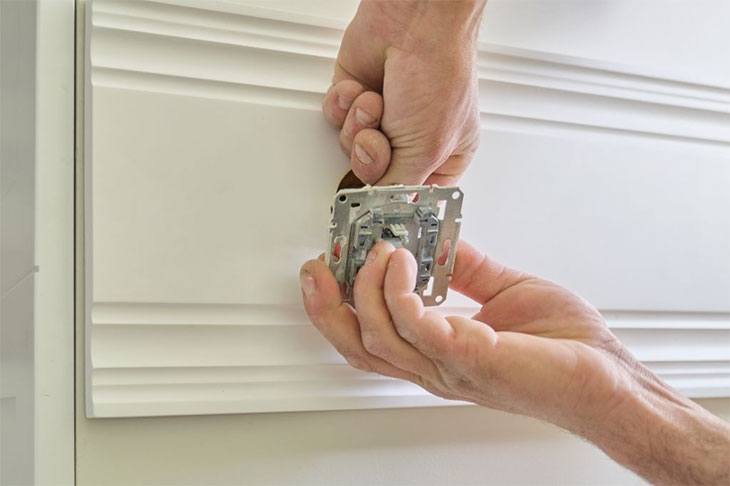Just as anything in life, even the simplest things in woodworking require you to research the matter beforehand, and gluing metal to wood is one of them, but don’t worry, once you master this and properly get to know how to do it, it’ll be a piece of cake.
Some of the common questions people have before starting are: What kind of material should I buy? Is there any precaution that I should consider before I start? Is there anything I should take care of so that I don’t damage the wood? How much money am I going to spend on this?
But don’t worry, read on this useful guide to know how to glue metal to wood. If you want to get the hang of it first, you might want to start off with something small.
More...
Get your materials ready to glue metal to wood
And just as in any job, the first step is to collect the right materials, lucky for you, they are really inexpensive and some of them might be of use multiple times.

For gluing together wood and metal, you’ll need the following items:
- A piece of wood
- Piece of metal
- Steel wool
- Clamp (Optional depending on the epoxy)
- Metal epoxy
Depending on the project you will want to use a different kind of glue other than Metal epoxy.
Polyurethane glue might prove useful for you if you want the final object to be water resistant, or you might want to use super glue as well since it is cheaper and you might already have it, but it really isn’t suitable for really hot or really cold places.
Some other alternatives are Resin glue, which can withstand extreme temperatures or Phenol Formaldehyde Resin, a type of glue which is usually used for plywood; it is useful if the metal you’re gluing is heavy.
And now you’re all set, time to start!
- Adhesives & Sealants
- Country of manufacture: United States
- Manufacturer: Dap
Read more —
Step by step guide on how to glue metal to wood
1. Cleaning comes first
First, you’re going to need to make sure that both the surface of the wood and metal are clean and dust free so that the glue evens out and lasts longer.
You can start by rubbing the steel wool onto the piece of metal, by doing this you will ensure that there is no rust left, since no matter where you store metal, it will always get at least a little rusty.
Now, you can also take care of the wood as well, take the sandpaper and rub it along the surface, with this you’ll get a clean and flat surface on the wood and you’ll lose any potential sawdust on the wood as well.
If you’re planning on placing the piece of metal on a piece of furniture or any other wooden object which already has wood polish, or is colored in any way, you might want to skip the step with the sandpaper and simply just clean the area where you’re going to stick the piece of metal.
2. Prepare the epoxy
For the metal epoxy, you will want to check with the local store’s clerk and find out which one is available and which one is the best, but in general, all epoxies have the same guideline.
Be aware that you’re not going to use the epoxy right away, start by reading the instructions and mix the items according to it, you may want to do this in a secluded area in some sort of container, don’t mix it on the wood itself, put the contents in a metal tin or whatever you have at your hand and leave it be for a while until it turns really sticky.
Note that some epoxies react with plastic, so try not to mix it in a plastic container.
3. To apply the epoxy

After some time, the mix will chemically react and you’ll get glue which will stick for a long time and provide that extra stability which you need, now you’re going to apply that mix.
This part should be located in the instructions as well, but the general guideline is that you only apply the mix on one of the objects, and usually people apply it on metal, grab something with which you can spread the epoxy mix and put it on the surface where you want to stick the piece of wood.
Be aware to not coat the metal with too little or too much epoxy, if you place too little it will be less stable, and if you put too much, it’s not going to stick together properly.
Read more —
4. Stick the pieces together
This step is optional as different epoxies have different timings, some might work in 20 seconds and some might take up to 5 minutes to glue the two objects, and if the latter is in question, you’re going to need a clamp.
Basically, if the epoxy reacts fast, just align the wood and metal pieces properly. Stick them together while applying force, this might take around 20 seconds. Once that time passes, congratulations, you’re done!
On the other hand, if the epoxy takes a long time to work, you might want to use a clamp, take the two pieces and align them together and hold them down with the clamp, try not to use too much force with the clamp as it might cause damage.
Leave it be for a designated time and then release the clamp and take your newly set wood and metal.
5. Test it out!
Now that you’re finished, all you need to do is test it out, be sure that the epoxy is dry at this point and that the metal part doesn’t move around at all, once this is achieved, all you need to do is use the sandpaper again and remove the excess epoxy around the edges of the metal.
There is nothing to it now, you have finally finished gluing the metal and wood together, you can now store the epoxy (not the mix) for later use.
Now that you know how to glue metal to wood, prepare yourself for doing more work and come out with flying colors in your woodworking endeavors.

